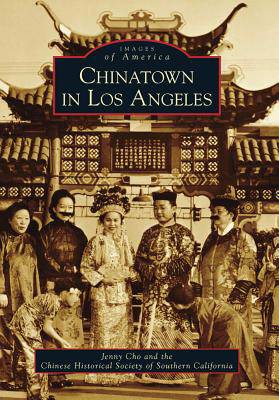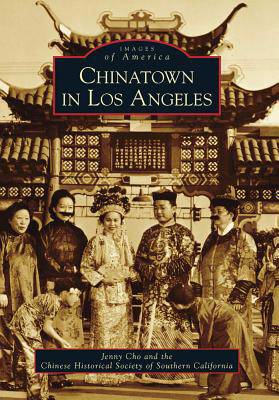
- Afhalen na 1 uur in een winkel met voorraad
- Gratis thuislevering in België vanaf € 30
- Ruim aanbod met 7 miljoen producten
- Afhalen na 1 uur in een winkel met voorraad
- Gratis thuislevering in België vanaf € 30
- Ruim aanbod met 7 miljoen producten
Zoeken
€ 34,95
+ 69 punten
Uitvoering
Omschrijving
The history of Chinatown in Los Angeles is as vibrant as the city itself. In 1850, the U.S. Census recorded only two Chinese men in Los Angeles who worked as domestic servants. During the second half of the 19th century, a Chinese settlement developed around the present-day El Pueblo de Los Angeles Historical Monument. Chinese Americans persevered against violence, racism, housing discrimination, exclusion laws, unfair taxation, and physical displacement to create better lives for future generations. When Old Chinatown was demolished to make way for Union Station, community leader Peter SooHoo Sr. and other Chinese Americans spearheaded the effort to build New Chinatown with the open-air Central Plaza. Unlike other Chinese enclaves in the United States, New Chinatown was owned and planned from its inception by Chinese Americans. New Chinatown celebrated its grand opening with dignitaries, celebrities, community members, and a dedication by California governor Frank Merriam on June 25, 1938.
Specificaties
Betrokkenen
- Auteur(s):
- Uitgeverij:
Inhoud
- Aantal bladzijden:
- 128
- Taal:
- Engels
- Reeks:
Eigenschappen
- Productcode (EAN):
- 9780738569567
- Verschijningsdatum:
- 6/05/2009
- Uitvoering:
- Paperback
- Formaat:
- Trade paperback (VS)
- Afmetingen:
- 165 mm x 231 mm
- Gewicht:
- 317 g

Alleen bij Standaard Boekhandel
+ 69 punten op je klantenkaart van Standaard Boekhandel
Beoordelingen
We publiceren alleen reviews die voldoen aan de voorwaarden voor reviews. Bekijk onze voorwaarden voor reviews.











